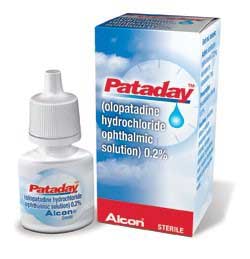Allergy Eye Symptoms: Not a Sight for Sore Eyes
The spring allergy season is in full force. The tree pollen counts last week were in the 3,000 range (low counts are under 50). The pollen has a devastating effect on the eyes. A new patient of mine, a young boy, was in the emergency room for five hours waiting to be treated for his inflammation and left with a recommendation to treat his allergies with Benadryl.
The eyelids and conjunctiva are particularly vulnerable to pollen for two reasons:
- The eyelids are the thinnest skin on the body
- The conjunctiva (the inside of the lid that is normally mildly red) are easily exposed to the heavy pollen.
Allergic conjunctivitis and Allergic blepharitis (eyelid inflammation) are some of the most uncomfortable allergy symptoms. We all know what it is like to feel like you have something stuck in your eye. The allergy sufferer with these problems feels a continual sense of “grit” or “sand” in their eyes. The problem is that the more they rub their eyes the more the cells release histamines which make the eye more red and swollen.
What’s the Best Defense Against Allergy Eye Symptoms?
What’s the best defense against allergy eye symptoms?
Like in basketball: the best defense is to be on the offense.
Essentially, be proactive in preventing the symptoms from getting a foothold. My first suggestion is to wear sunglasses. Protective sunglasses not only protect your eyes from harmful UV rays, but they are also a shield against the pollen getting into the conjunctiva and eyelids. I know many adults wear sunglasses for the “show biz” look but children who play outside for hours rarely wear them.

My next piece of advice is to begin a regimen of prescription eye drops. Prescription eye drops go directly to the affected eye tissue and can soothe inflammation there. The common prescription eye drops are Pataday, Patanol, Elestat, and Optivar; unfortunately, they all tend to be very expensive, even with insurance coverage.
Oral antihistamines are not as effective for eye symptoms, and can also dry the eyes which adds to the patient’s discomfort.
What’s the Worst Thing to Do for Eye Allergies?
Whatever you do, don’t buy over-the-counter eye drops like Visine! They may get the red out temporarily, but if you use them regularly you may create bigger problems: chronic red eyes due to rebound effects. I had a patient once who had been using a Visine type eye drop for years, and he realized he couldn’t stop because his eyes would get red. (He often got asked if he was on drugs… Awkward, to say the least.)
What’s the Best Treatment for Eye Allergies?
I believe the ultimate defense against allergy eye symptoms that are unavoidable is sublingual allergy drops. I’ve been using them in my practice for 15 years, and I find it truly decreases or eliminates the worst scenarios. I do a get a call now and then from a patient on allergy drops that they are feeling some eye irritation but if they use the prescription eye drops along with my sublingual allergy drops they get better much faster. The “bare” patients, without the allergy drops, seem to suffer more intense and symptoms of longer duration despite using medications.
Allergy eye symptoms are no sight for sore eyes but you can see a whole lot better if you are proactive and opt for the best line of defense and treatment.
– Dr. Dean Mitchell
Mitchell Medical Group, NYC & Long Island
If you liked this blog, make to check out some of our other popular blogs:

